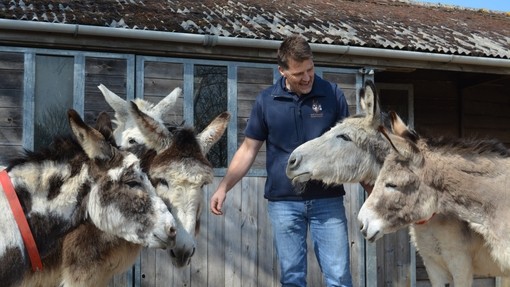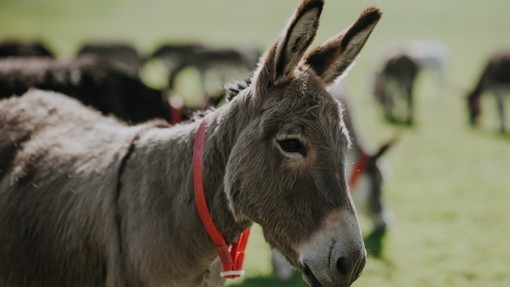
Getting help early
Subtle changes in behaviour
Watch out for subtle changes in your donkey or mules’ behaviour when they interact with handlers and companions.
Hanging back, defensiveness or increased conflict between individuals may be indicators of behaviour issues. You may also notice changes in resting or eating patterns.
Body tension when handled
The following signs may indicate behaviour issues:
- Tight muzzle
- Tight nostrils
- Tail clamping
- Tail swishing
- Tight back
- Tucked rump.
New behaviour
Look out for the following signs:
- Taking longer to catch than normal
- Small fleeting resistance to feet handling
- Ears going back when touched
- Flinching away from hands or brushes
- Becoming nervous or anxious with handler
- Being anxious or fidgety when groomed or tied up
- Defensive behaviour, such as kick or bite threats.
Nervous or anxious
Pay attention to signs that your donkey may be nervous or fearful with new situations or people, such as vets, farriers, dentists, handlers or strangers. This might be new or existing behaviour.
If you spot a behaviour issue
- Stop what you are doing, and don’t make an issue of it.
- Don’t try to make the animal comply
- Don’t ignore the issue
- See if the behaviour is the same the next day
- Get some video of the behaviour
- For intermittent behaviour, keep a diary
- Get a vet to check for pain
- Contact the behaviour team at The Donkey Sanctuary
Answers to common donkey behaviour problems
For more information, watch our donkey behaviour webinar to learn more about common donkey behaviour issues.
Share this page
Tags
- Blog
Published on .




